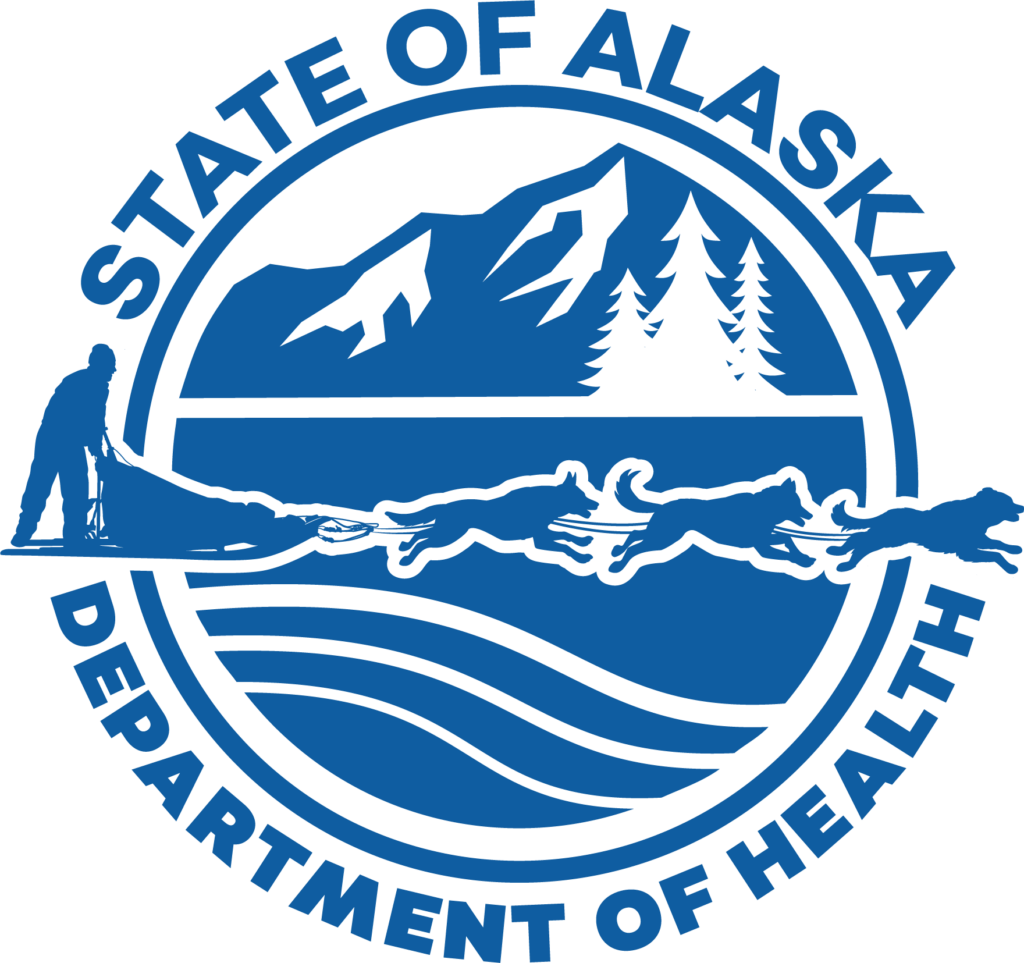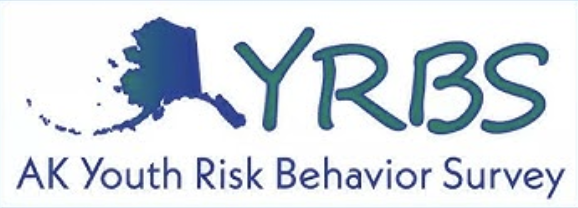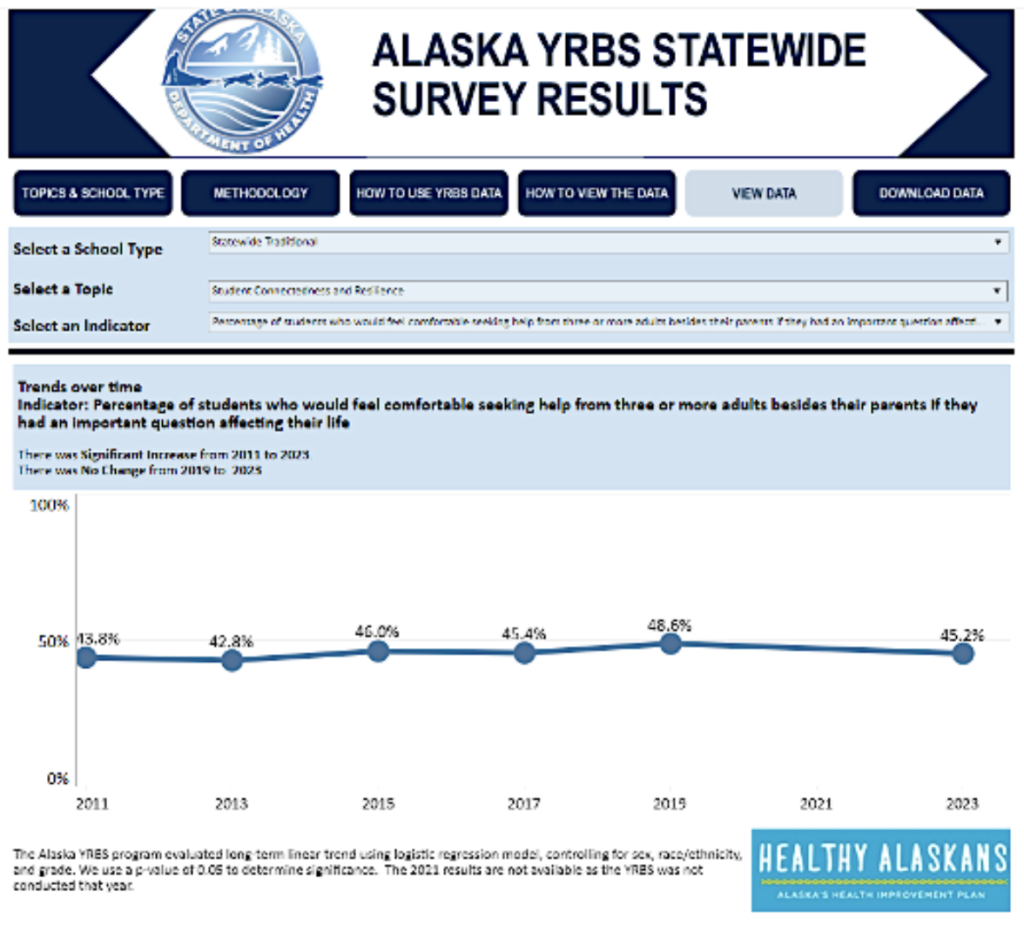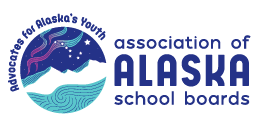Alaska Youth Risk Behavior Survey results reveal adolescents continue to experience poor mental health, electronic bullying, and not enough physical activity

Alaska Department of Health|Division of Public Health, Physical Activity & Nutrition Unit
Results from an Alaska survey of almost 1,200 high school students statewide tell a story about Alaska’s high school students. This story is a mix of struggles and success when it comes to adolescent health and well-being: Too many high school students are struggling with mental health and not getting enough physical activity. At the same time, fewer teens have ever used marijuana or currently smoke.

These results come from the recently analyzed 2023 Youth Risk Behavior Survey (YRBS). This survey reports findings from Alaska high school students who had parental permission to answer questions anonymously and voluntarily about many health and social behaviors. For years, this survey has helped Alaska parents, educators and public health programs better meet the needs of youth and their families.
Mental health, connections with supportive adults, and physical activity
The 2023 YRBS showed levels of suicidal thoughts remain persistently high for high school students. Since 2011, there has been a significant increase in the percentage of adolescents who seriously considered (23% in 2023), made a plan for (21% in 2023), or attempted suicide (19% in 2023), or who felt sad or hopeless for a significant time in the past 12 months (43% in 2023). During this time period, there was also a significant increase in the percentage of adolescents who were bullied electronically (15% in 2011 to 20% in 2023). Although regular physical activity can reduce symptoms of anxiety and depression, fewer than one in five (18%) adolescents got the recommended 60 minutes of physical activity per day in 2023.

“My heart breaks for our young Alaskans who are struggling and for families across the state” said Lindsey Kato, Director of the Alaska Division of Public Health. “These statistics reinforce the continued work that is needed to support our children and families to improve community connectedness, economic stability, and access to quality health services; the need for public health and public safety to work side by side our violence prevention work, so that Alaskans can focus on things like physical activity, education, and nutrition. We know that all of this is connected, we know that these results are felt in our communities and seen in the state’s increased rates of overdose and high rates of suicide.”
More than one in 10 (11% in 2023) youth report having slept away from their parents’ or guardians’ homes because they were kicked out, ran away, were abandoned, or felt unsafe in their home during the past 12 months. And less than half (45% in 2023) say they have three or more adults besides their parents they would feel comfortable seeking help from if needed.
Body weight and sugary drink consumption
The recent YRBS survey revealed concerns related to increased sugary drink consumption and unhealthy body weight. Both impact health into adulthood. The survey showed a significant decline in high school students living at a healthy weight (72% in 2011 to 64% in 2023) and an increase in these students drinking a sugary drink every day (45% in 2011 to 53% in 2023). One sugary drink often has more sugar than youth should have in one day.
Cigarette and drug use
Prevention programs that work with youth will be interested in the findings related to use and misuse of drugs and cigarettes. The percentage of adolescents who ever used marijuana decreased significantly from 38% in 2019 to 33% in 2023. In 2023, the percentage of adolescents who had misused prescription pain medication in the past 30 days was 6%. This was not significantly different from the percentage reported during the past several years. Both cigarette smoking (7% in 2023) and secondhand smoke exposure (25% in 2023) among adolescents are down significantly from their 2011 levels.

The Alaska Department of Health Tobacco Prevention and Control Program staff are encouraged by some of the recent YRBS findings related to e-cigarettes, according to program manager Christy Knight. There has been a significant increase in the percentage of adolescents who see great harm in using vaping products, from 27% in 2019 to 42% in 2023. Current vaping decreased from its 2019 peak of 26% to 17% in 2023, but there is still cause for concern.
“Although the percentage of adolescents who vaped at all in the past month has declined in recent years, it’s very concerning that one out of six adolescents currently use this form of nicotine and daily use has nearly tripled,” Knight said. Daily e-cigarette use increased from 2% in 2011 to 6% in 2023. Alaska’s TPC program continues to run its Not Buying It campaign to educate youth statewide about the health harms and addiction related to tobacco and e-cigarette use. Alaska parents and educators can find information and free resources online to support adolescents who use tobacco or nicotine products.
Coming Soon! 2025 YRBS
The Alaska Department of Health (DOH) is planning the 2025 YRBS, scheduled for the second semester of the 2024-2025 school year. Official participation requests will be emailed to district superintendents soon. This year, we are excited to introduce electronic administration, which aims to ease the process for school staff and enhance student participation. To learn more about the Alaska YRBS and how results are used, please watch this informational video.
For questions, please contact us at yrbs@alaska.gov or visit our website: YRBS Website or join our email list, here. We could not collect this important information without the cooperation and assistance of our partners in education. Thank you for your support in this very important work!
The views expressed here are the writer’s and are not necessarily endorsed by the Association of Alaska School Boards. AASB welcomes diverse perspectives and civil discourse. To submit a Guest Column for consideration, see our Guest Column Guidelines and email your 400-1000 word submission HERE.
